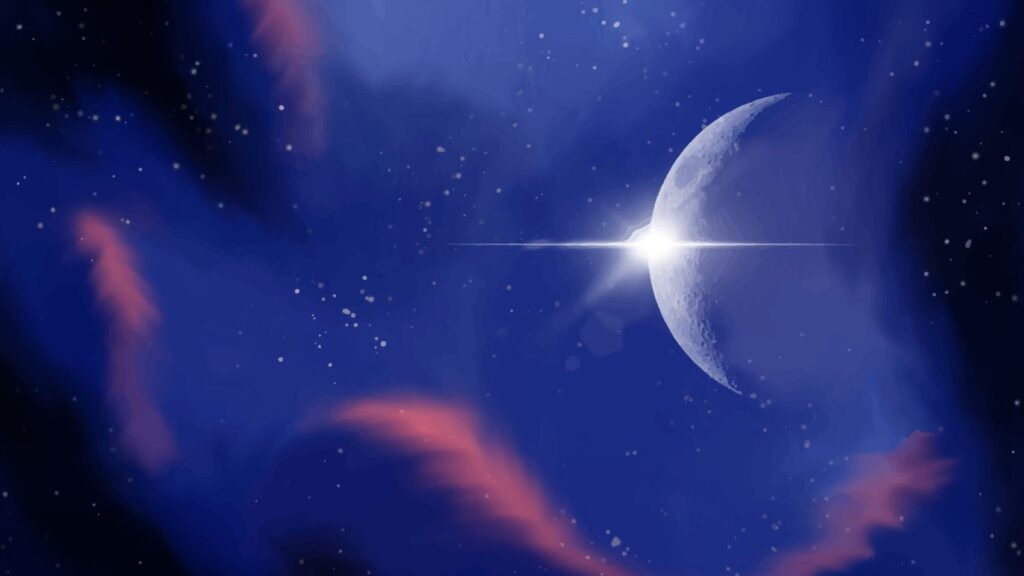This July, skywatchers can get a chance to enjoy various phenomena such as star clusters and meteor showers. Alongside this, eager stargazers can also get to see the planet closest to the sun, and the dwarf planet furthest away from the Sun, in the same month.
As per National Geographic, here are some upcoming celestial events to look forward to this July.
Mercury, at its greatest eastern elongation: July 4
Mercury, the innermost planet in the solar system and one of the closest to Earth, is one of the most difficult planets to spot. However, on July 4, it will reach greatest eastern elongation, or be at the furthest apparent distance from the Sun.
To have a chance of sighting Mercury, look west-northwest on the horizon just after the sun sets. The planet should be visible for a few twilight hours. Even if July 4 is cloudy, Mercury will still be visible for the following few weeks.
The phenomenon is likely to be visible in the Northern Hemisphere, which includes most of Europe, North America, northern India, and parts of China and Japan.
Buck moon: July 10
The first full moon of July is nicknamed the “Buck moon”, due to being the time when deers (or bucks) begin regrowing their antlers. This moon will be visible on July 10, and peak at approximately 4:37 P.M EDT.
This moon will appear notably bright and detailed. For an enriched experience, you can use binoculars to observe features such as the Tycho crater and its bright rays, and the darker basalt plains, called maria, on the moon’s surface.
Story continues below this ad
 The first full moon of July, nicknamed the “Buck moon” will be one of the most detailed moons of the year. (Image credit: NASA)
The first full moon of July, nicknamed the “Buck moon” will be one of the most detailed moons of the year. (Image credit: NASA)
In case the moon is above the horizon and not hindered by the clouds, it is likely to be visible to the naked eye for those in North and South America, Asia, Africa, and Australia.
Alignment of Moon, Saturn, and Neptune: July 16
Before dawn on July 16, the crescent moon will momentarily align, and appear to go past Saturn and Neptune, within the Pisces constellation. With Saturn being the brighter planet, it will be much easier to view with the naked eye. Neptune on the other hand is significantly dimmer, meaning you will need a telescope to view it.
Saturn has just entered its retrograde phase, which is a short period where the planet appears to be moving in the opposite direction as Earth. In this case, Saturn will appear to move West-to-East.
Crescent moon nears Pleiades: July 20
Before July 20’s sunrise, the crescent moon will appear to pass very close to the open star cluster Pleiades. This cluster is also known as the Seven Sisters, or Messier 45 (M45). It contains over 1,000 young stars, but about six to nine are visible with the naked eye.
Story continues below this ad
It is ideal to view the moon and cluster through binoculars, as this allows you to see the cluster’s shining stars in the same field of view as the glowing crescent moon.
Pluto at pedigree: July 25
On July 25, Pluto will be both at opposition, and at its pedigree. What this means is that it will be directly opposite the sun, while also being the closest to Earth during its orbit. This makes it the best time to attempt to sight the dwarf planet in all its glory.
While it is still only a faint speck in the vast night sky, a fairly powerful telescope can help in viewing it. To locate it, look around the constellation Sagittarius, at around midnight.
Moon-Mars conjunction: July 28-29
The moon is set to closely pass Mars in the Taurus constellation, on July 29. The alignment will appear to be lower on the horizon and could be limited by sunlight and clouds.
Story continues below this ad
However, if skies are clear and conditions permit, the crescent moon’s subtle glow contrasting with Mars’s striking red hue will be an enchanting spectacle.
Southern delta Aquariids meteor shower peak: July 29–30
This meteor shower is usually active from July 18 to August 12, but is likely to be at its peak overnight on July 29-30. With the crescent moon likely to set early, the dark clear skies as a result might offer up to 25 meteor sightings per hour.
However, the Southern delta Aquariids meteors tend to be fainter than normal meteor sightings. Clearer meteor sightings might occur in mid-August, as the Southern delta Aquariids has scope to overlap with the Perseids meteor shower for a few days.
 The Southern delta Aquariids meteor shower peak will offer up to 25 meteor sightings an hour. (Image credit: NASA)
The Southern delta Aquariids meteor shower peak will offer up to 25 meteor sightings an hour. (Image credit: NASA)
Tips for best viewing
It is ideal to be in a dark, open-air environment with limited pollution in the air for clear sightings. Keeping binoculars, or if possible a telescope, is advised for a better, more detailed view.
Story continues below this ad
For certain events, they are likely to only occur at specific times which vary by region, so a useful step could be to check the times and visibilities online before heading outside.
(This article has been curated by Purv Ashar, who is an intern with The Indian Express)


